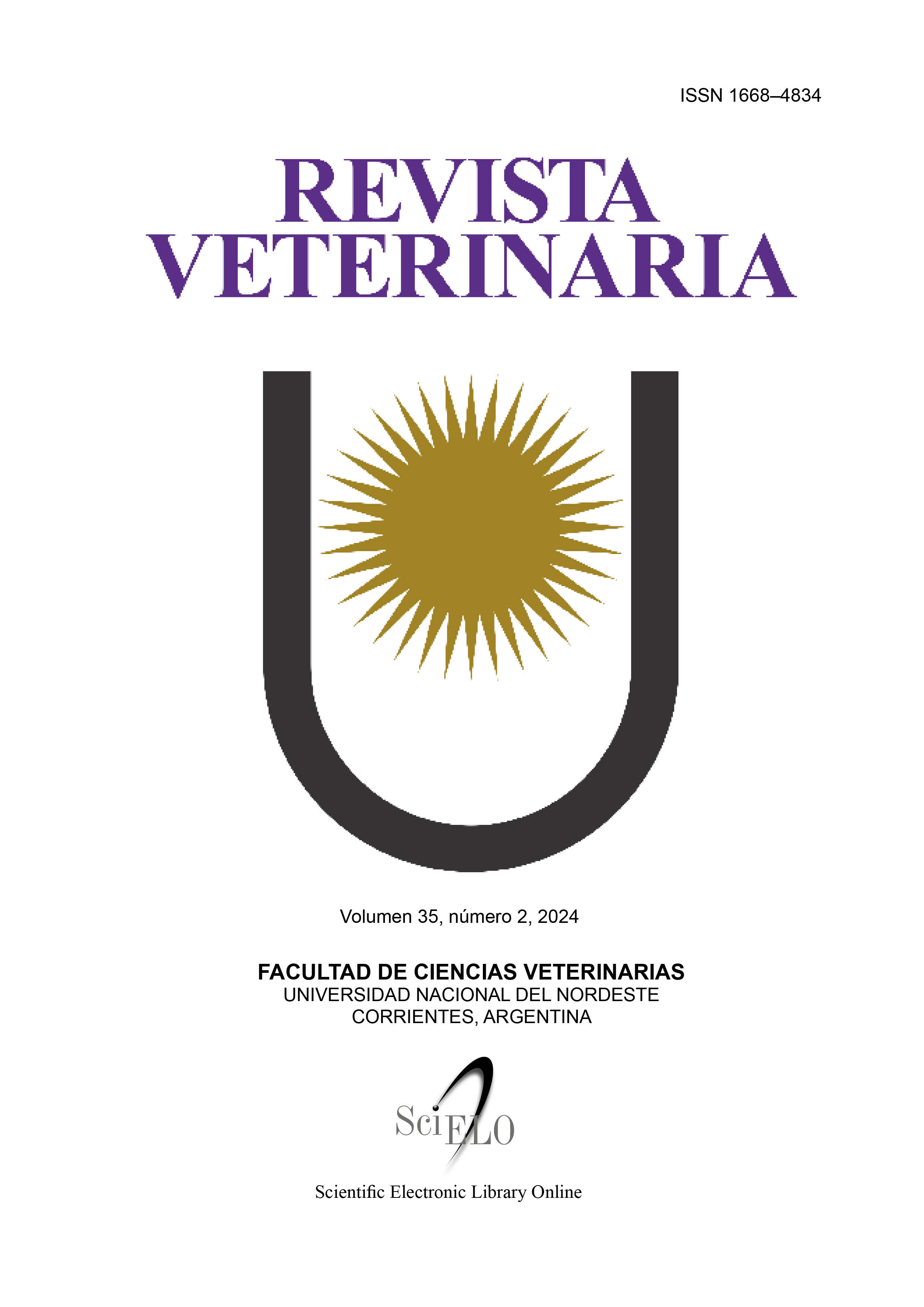Estimating attrition of Sprague Dawley rats for research involving primary neuronal cultures
DOI:
https://doi.org/10.30972/vet.3527858Palavras-chave:
Laboratory animals, Rat embryos, Sample size, Statistical analysisResumo
The use of laboratory animals for biomedical research is strictly regulated to prevent their suffering and inadequate use. While experimentation is in process, attrition usually can increase the number of animals needed to achieve the objectives. Unfortunately, attrition is not commonly reported in literature. In the present study, we worked with primary neuronal cell cultures to establish the first in vitro brain ischemia model in Panama. We report the effects of attrition in the final number of animals. Primary cortical cell cultures were produced from Sprague Dawley rat embryos. Vaginal cytology was used to evaluate oestrus cycle. Pregnant rats had routine evaluation plus clinical/weight follow up. Sample size calculations estimated 26 rats for the study using an attrition rate of 25%. The final number of animals used empirically was 26; however, the measured attrition was 50% (13). These results highlight the importance of calculating attrition for studies requiring laboratory animals, taking in consideration the context and available data from local institutions to allow for the most efficient use of laboratory animals, especially for newly established laboratories in developing countries.
Downloads
Referências
Agmo A. Male rat sexual behavior. Brain Res Brain Res Protoc. 1997; 1: 203-209.
Ajayi AF, Akhigbe RE. Staging of the estrous cycle and induction of estrus in experimental rodents: an update. Fertil Res Pract. 2020; 6: 5.
Anthony A, Ackerman E, Lloyd JA. Noise Stress in Laboratory Rodents. I. Behavioral and Endocrine Response of Mice, Rats, and Guinea Pigs. J Acoust Soc Am. 2005; 31: 1430-1437.
Arifin WN, Zahiruddin WM. Sample Size Calculation in Animal Studies Using Resource Equation Approach. Malays J Med Sci. 2017; 24: 101-105.
Charan J, Kantharia ND. How to calculate sample size in animal studies? J Pharmacol Pharmacother. 2013; 4: 303-306.
Dell RB, Holleran S, Ramakrishnan R. Sample size determination. ILAR J. 2002; 43: 207-213.
Fitts DA. Ethics and animal numbers: informal analyses, uncertain sample sizes, inefficient replications, and type I errors. J Am Assoc Lab Anim Sci. 2011; 50: 445-453.
Gaskill BN, Garner JP. Stressed out: providing laboratory animals with behavioral control to reduce the physiological effects of stress. Lab Anim (NY). 2017; 46: 142-145.
Hamid HY, Zakaria ZAB. Reproductive characteristics of the female laboratory rat. Afr J Biotechnol. 2013; 12: 2510-2514.
Holman C, Piper SK, Grittner U, Diamantaras AA, Kimmelman J, Siegerink B, Dirnagl U. Where Have All the Rodents Gone? The Effects of Attrition in Experimental Research on Cancer and Stroke. PLoS Biol. 2016; 14: e1002331.
Ilyas M, Adzim M, Simbak N, Atif A. Sample Size Calculation for Animal Studies Using Degree of Freedom (E); an Easy and Statistically Defined Approach for Metabolomics and Genetic Research. Curr Trends Biomed Eng Biosci. 2017; 10: 47-48.
Lincoln CK, Gabridge MG. Cell culture contamination: sources, consequences, prevention, and elimination. Methods Cell Biol. 1998; 57: 49-65.
Long JA, Evans HM. The oestrous cycle in the rat and its associated phenomena. Berkeley, Calif: University of California Press; 1922.
National Research Council (US) Committee for the Update of the Guide for the Care and Use of Laboratory Animals 2011. Guide for the Care and Use of Laboratory Animals. 8th ed. Washington (DC).
Percie du Sert N, Hurst V, Ahluwalia A, Alam S, Avey MT, Baker M, Browne WJ, Clark A, Cuthill IC, Dirnagl U, Emerson M, Garner P, Holgate ST, Howells DW, Karp NA, Lazic SE, Lidster K, MacCallum CJ, Macleod M, Pearl EJ, Petersen OH, Rawle F, Reynolds P, Rooney K, Sena ES, Silberberg SD, Steckler T, Wurbel H. The ARRIVE guidelines 2.0: Updated guidelines for reporting animal research. PLoS Biol. 2020; 18: e3000410.
Richter V, Muche R, Mayer B. How much confidence do we need in animal experiments? Statistical assumptions in sample size estimation. J Appl Anim Welf Sci. 2018; 21: 325-333.
Russell WMS, Burch RL. The principles of humane experimental technique. London: Methuen; 1959.
Russell WMS, Burch RL, Universities Federation for Animal W. The principles of humane experimental technique. Special. Wheathampstead: Universities Federation for Animal Welfare Wheathampstead; 1992. XIV, 238 p.: gràf.; 21 cm.
Sena ES, van der Worp HB, Bath PM, Howells DW, Macleod MR. Publication bias in reports of animal stroke studies leads to major overstatement of efficacy. PLoS Biol. 2010; 8: e1000344.
Sharp PE, La Regina MC, Suckow MA. The laboratory rat. Boca Raton: CRC Press Boca Raton; 1998. 214 pages: illustrations; 24 cm.
Swingle WW, Seay P, Perlmutt J, Collins EJ, Barlow GJr., Fedor EJ. An experimental study of pseudopregnancy in rat. Am J Physiol. 1951; 167: 586-592.
Tannenbaum J, Bennett BT. Russell and Burch’s 3Rs then and now: the need for clarity in definition and purpose. J Am Assoc Lab Anim Sci. 2015; 54: 120-132.
Downloads
Publicado
Como Citar
Edição
Seção
Licença

Este trabalho está licenciado sob uma licença Creative Commons Attribution-NonCommercial 4.0 International License.
Política de acceso abierto
Esta revista proporciona un acceso abierto inmediato a su contenido, basado en el principio de que ofrecer al público un acceso libre a las investigaciones ayuda a un mayor intercambio global de conocimiento. La publicación por parte de terceros será autorizada por Revista Veterinaria toda vez que se la reconozca debidamente y en forma explícita como lugar de publicación del original.
Esta obra está bajo una licencia de Creative Commons Reconocimiento-NoComercial 4.0 Internacional (CC BY-NC 4.0)










.jpg)
.jpg)



